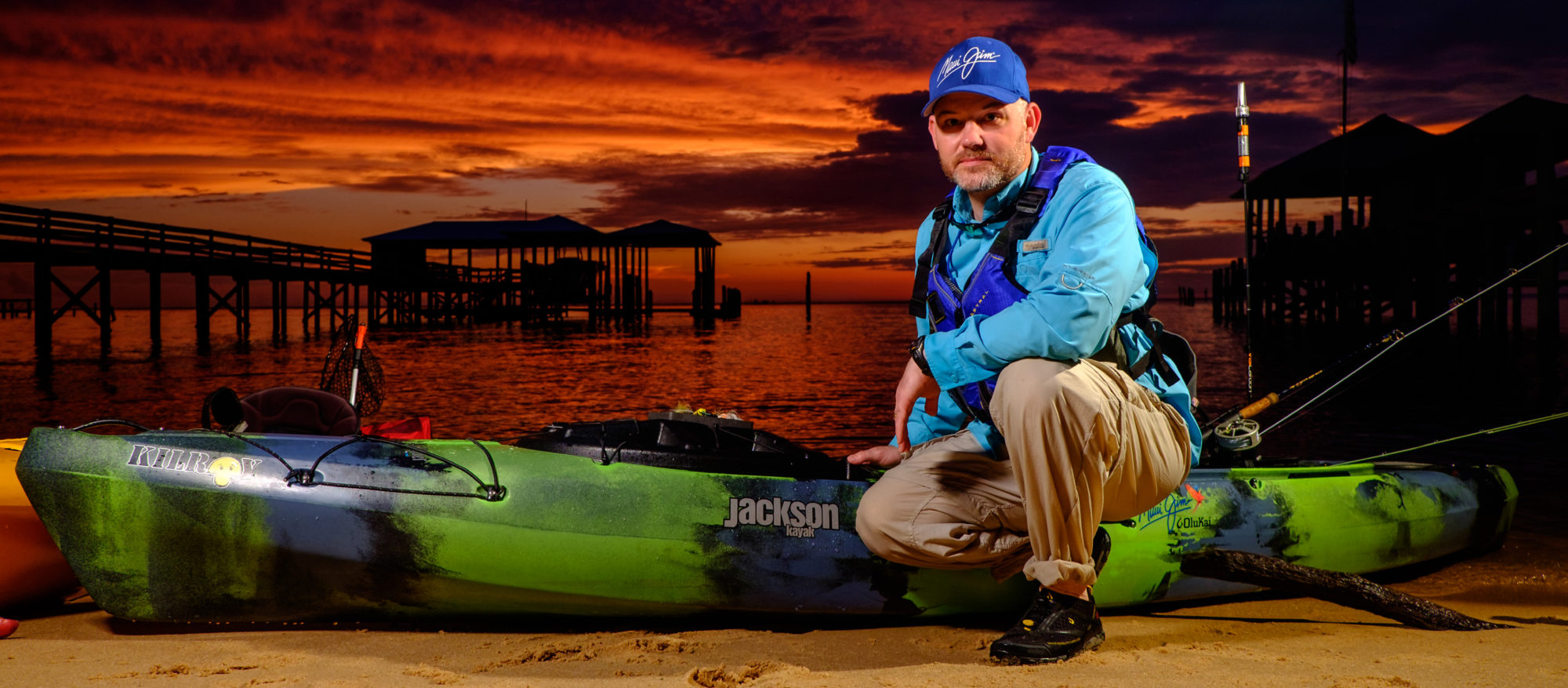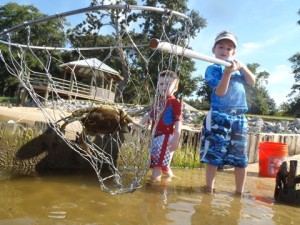According to the Auburn University Marine Extension & Research Center, a Jubilee occurs in the summer months on a rising tide, with a light east wind. Salinity stratification builds due to stagnation, and prevents the oxygen from the air to penetrate through the water column. The result is flounder, blue crab, shrimp, sting ray, eel, and various other fish pushed to surface, gasping for oxygen along the shoreline between Daphne and Mullet Point in Mobile Bay.
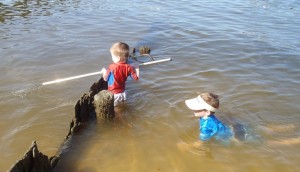 On a warm muggy morning I woke to the alarm of a Jubilee from a friend’s thoughtful text! The boys and I got ready as fast as we could to gather a bounty of seafood ready for the taking. Prime time for the Jubilee are the hours preceding sunrise. This is due to the continuous depletion of oxygen levels during night hours, along with the conditions previously stated. Quite frequently, the predominant species of a Jubilee will be flounder, blue crab, and shrimp. These are typically bottom dwellers that have difficulty elevating above the stratified bottom of water column. We arrived after peak, but still were able to capture enough flounder, shrimp, blue crab, mullet, and black drum to have a great lunch.
On a warm muggy morning I woke to the alarm of a Jubilee from a friend’s thoughtful text! The boys and I got ready as fast as we could to gather a bounty of seafood ready for the taking. Prime time for the Jubilee are the hours preceding sunrise. This is due to the continuous depletion of oxygen levels during night hours, along with the conditions previously stated. Quite frequently, the predominant species of a Jubilee will be flounder, blue crab, and shrimp. These are typically bottom dwellers that have difficulty elevating above the stratified bottom of water column. We arrived after peak, but still were able to capture enough flounder, shrimp, blue crab, mullet, and black drum to have a great lunch.
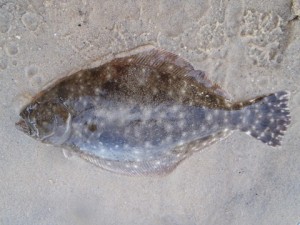 Even though there are well known, typical conditions that favor the Jubilee’s occurrence, locals have clued me in on some other not so well documented observations. A long time resident says that they tend to occur during the night after a later afternoon thunderstorm, in combination with other well known conditions. He reports the location could be in the vicinity of any freshwater creek that flows into the bay. His theory is that the influx of freshwater from a creek is carried by the tide and wrapped around an area of shoreline, encouraging salinity stratification to occur in a localized area.
Even though there are well known, typical conditions that favor the Jubilee’s occurrence, locals have clued me in on some other not so well documented observations. A long time resident says that they tend to occur during the night after a later afternoon thunderstorm, in combination with other well known conditions. He reports the location could be in the vicinity of any freshwater creek that flows into the bay. His theory is that the influx of freshwater from a creek is carried by the tide and wrapped around an area of shoreline, encouraging salinity stratification to occur in a localized area.
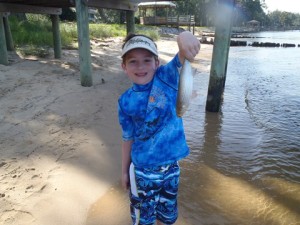 Also, I’ve been told that there are times around a neap tide (slack tide) that a Jubilee can occur due to the stagnation of the water. Much is made about the Jubilee’s that occur on the eastern shore, but I also have heard of events welling up on the western shore too. Given a set of circumstances that are just right, they can occur just about anywhere along the bay’s quaint sandy beaches.
Also, I’ve been told that there are times around a neap tide (slack tide) that a Jubilee can occur due to the stagnation of the water. Much is made about the Jubilee’s that occur on the eastern shore, but I also have heard of events welling up on the western shore too. Given a set of circumstances that are just right, they can occur just about anywhere along the bay’s quaint sandy beaches.
 We feel honored to have had the opportunity to partake in a Jubilee and look forward to being lucky enough to encounter another in the future.
We feel honored to have had the opportunity to partake in a Jubilee and look forward to being lucky enough to encounter another in the future.
For more information on the science behind the phenomena of the Jubilee on Mobile Bay:
Click here for further information and illustrations by Auburn University Marine & Research Center on the Mobile Bay Jubilee
Copyright 2012 by icastinayak.com. All rights reserved
